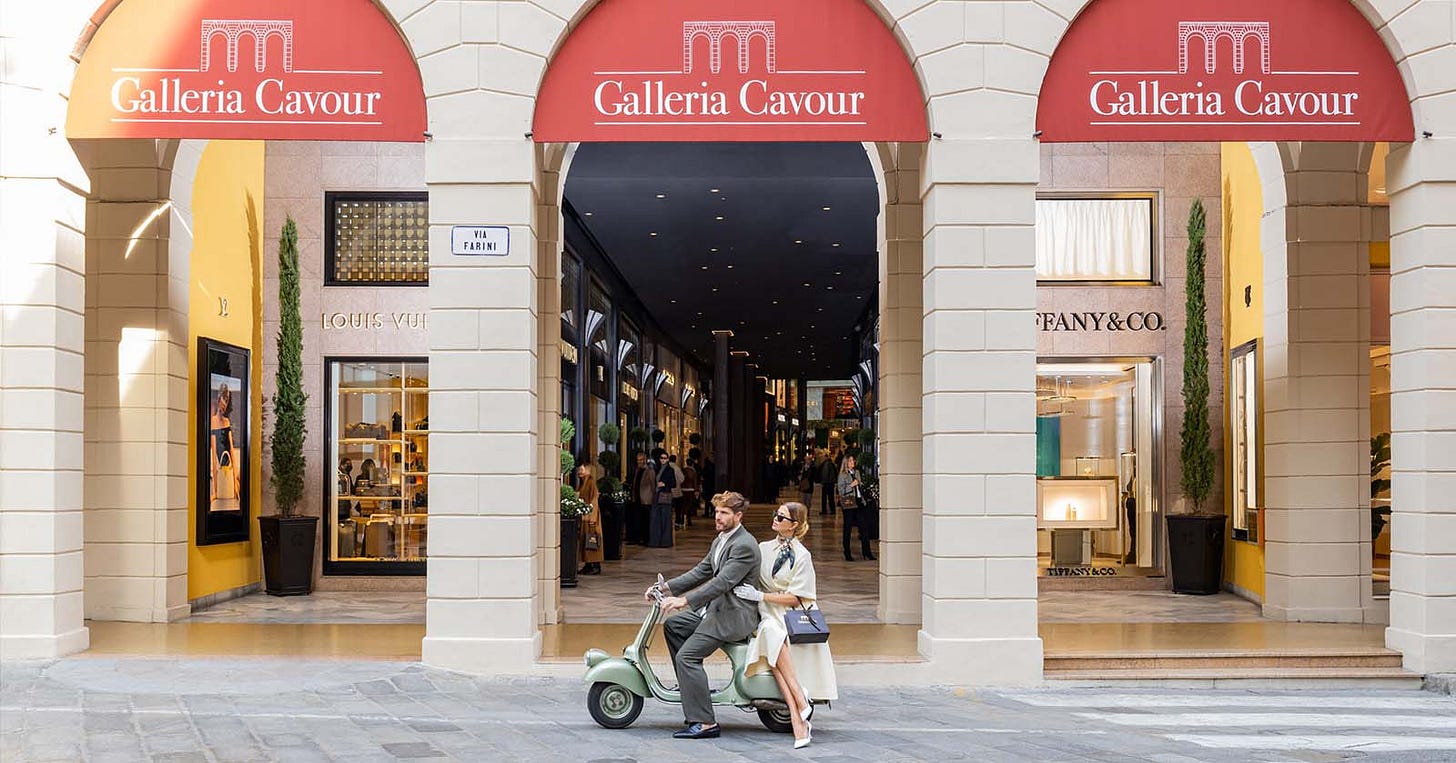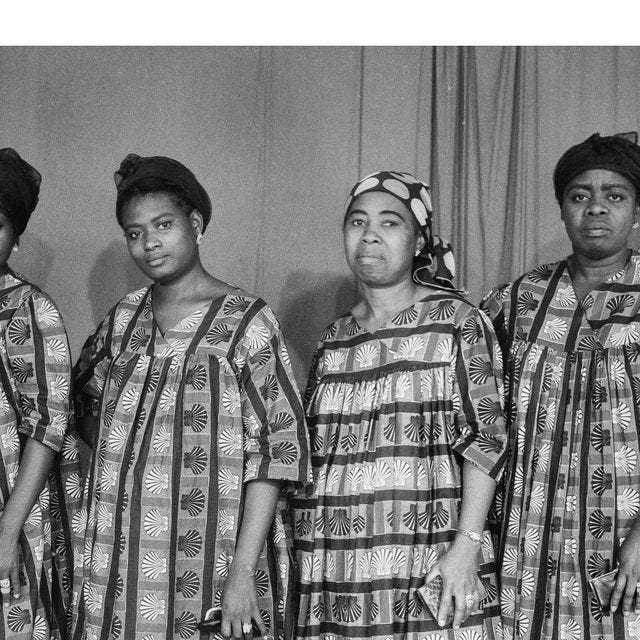Le Journal Curioso will officially start in September, so you will only receive one newsletter this month. Until then, I hope the story below will give you a glimpse of who I am and what to expect of Le Journal Curioso.
What a title for a first newsletter, although I wrote on my ‘About‘page that I am “a sub-editor and translator for luxury e-commerce and a writer passionate about her job.” Growing up, I wasn’t into fashion, even if I have parents who clearly have a sense of fashion and are knowledgeable about it. Only when I started working did I discover my parents had an incredible collection of books that would be useful for my career and culture to this day. But before that, I was just enjoying dressing, but this is another story.
My journey towards fashion started in Bologna, Italy. I arrived there in 2009 to complete my bachelor’s degree in Italian language and culture at the Università degli Studi di Bologna during a one-year Erasmus program and instead stayed for five years. During this period, I spent a year studying at the literature faculty while cramming for the exam entrance to the Master’s in International Relations at the faculty of political sciences. Just this should tell you I was never someone to focus on one topic. I am curious! Furthermore, living in Bologna meant being constantly stimulated. It has one of the oldest universities (1088) in the Occidental world and a rich political, musical, artistic and fashion History.
Emilia-Romagna, the region of Bologna, is home to some of the most iconic Italian global and national brands, such as Max Mara, Blumarine, and La Perla. A certain Giorgio Armani hailing from Piacenza is the region’s pride.
While in France, any French brand is associated with Paris, in Italy, fashion seems to be woven into the whole country’s DNA. Before coming to Italy, all I knew about Italian fashion was Milan was its capital, yet walking the streets of Bologna and going through Galleria Cavour - a beautiful gallery created in 1959 to boost the city’s economy through luxury clothing - I started understanding fashion wasn’t only in Milan. The time the gallery was built aligns with a particular era that spanned from the 50s to the 70s. This period saw politicians and industrials lay the foundation for the Italian fashion industry in an effort to rebuild the country’s economy after WWII. As a consequence, many renowned Italian brands started during this period:
Max Mara in 1951
Missoni in 1953
Pucci at the beginning of the 50s
Other brands like Gucci, Prada and Fendi saw a revival and rebranding during those two decades.
I always had a soft spot for History to the point that I was a tour guide for two seasons in a Renaissance castle near Paris. I never dreamt of working in the industry, but what got me into it was its intertwining with History and society. In Italy, fashion is not only a matter of the elite but of the people, unlike in France. At the end of September 2022, I moved to Putignano, a small town in Apulia, South Italy. I moved there on a whim - again, that is a story for another newsletter - so needless to say, I was clueless about the region and the city. Putignano counts around 26 000 inhabitants and seems like a deserted town from 1 pm to 4 pm - much like in Spain; it becomes a sleeping beauty during the scorching hours. At 4.01 pm, little by little, the paved streets flanked by bright white, old houses and colourful buildings take life. Shops reopen, teens go around in groups, elders sit on benches to people-watch while families get ice cream, and groups of friends gather around a beer. Putignano is a city of habits. You will find the same group of bystanders at the exact same point you left them the day before, as if they never left. It is fascinating. But these rituals, repeated generation after generation, hide a soft hustle and bustle.
Putignano is the Italian capital of the wedding dress and produces children’s clothing. Bari, the region it belongs to, has textile factories and ateliers producing some of the most beautiful fabrics and embroidery for Italian and French Maisons. In April, I was at a birthday party where a friend gifted an intricate and delicate lace christening baby gown to another friend who just gave birth. The dress, entirely handmade by my friend’s mother, looked like it belonged to a haute couture atelier. It is fascinating to witness such moments in a place where fashion is apparently invisible. There are hidden ateliers in tiny streets, and factories are some kilometres from the city centre. You could be surprised to find a tailor or a small boutique walking by a quiet living area. Though the region is not as productive as it was, these little details prove how much fashion matters to all social classes in the country. And this is the type of story I want to tell about fashion.

More and more, my point of view is shifting. And I don’t want to talk about fashion only from an Occidental point of view. After all, my first sartorial memories belong to Douala, Cameroon’s economic capital and the city I was born in. Though I left when I was three, one memory stuck in my mind: my grandmother in her navy blue kaba and headscarf. Navy blue and kaba were how I identified her. When we returned five years later, this identity marker had disappeared, for my grandmother stopped wearing navy blue because it is the widow’s colour in our culture. My grandmother had a new life in which she wore all the colours, like all of them.
Returning at eight in Cameroon meant I could clearly remember my cousins’ school uniforms, Sunday outfits for church, and Saturday stop at the tailor and hairdresser— things I didn’t see or do in France. I spent most of my days in shorts and sometimes dresses when I was allergic to the latter in France, but a childhood in Cameroon meant I spent much more time outside running and climbing trees, so my wardrobe reflected it. There was no shopping for clothes in Douala; stores and malls didn’t offer much, so my mom waited to return to France for that. Meanwhile, my dad had fun designing jewellery that he brought to artisans. And each time I went with him. No wonder today, I am obsessed with jewellery.
Coming back and forth between Cameroon and France, I started to understand the different lifestyles and cultures and how people wore and carried themselves in their clothes. But I never thought in a million years that these things would inform how I view the world. When we went back to France, I was twelve. The return was brutal at first because I left a place where everyone looked like me to come to a place where people didn’t understand who I was and that being Cameroonian and French was possible. So I’d like Le Journal Curioso to be a place where I tell stories about myself and others in which identity, culture, style and fashion intersect.
So stay tuned for this first column is just the beginning!






